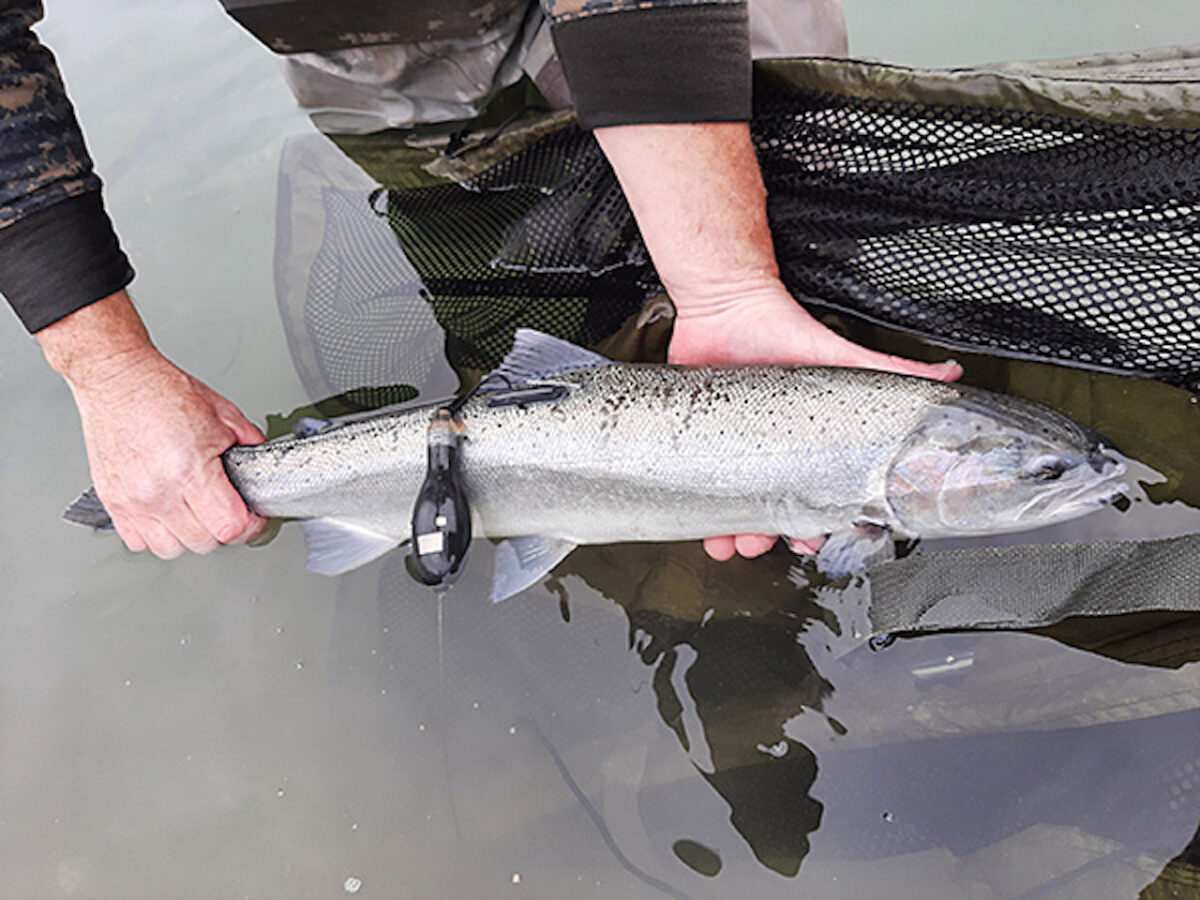
Satellite Tracking Tags To Be Attached To Rogue, Chetco Winter-Run Steelhead
THE FOLLOWING IS A PRESS RELEASE FROM THE OREGON DEPARTMENT OF FISH AND WILDLIFE
If you’ve ever wondered where steelhead go in the ocean after they spawned in rivers, you’re not alone. ODFW biologists in southern Oregon want to know too.

Biologists are putting satellite “pop-off” tags on 10 adult winter steelhead in the Rogue and Chetco rivers this spring. The goal is to tag “kelts” – the fish that already successfully spawned and are heading back to sea.
Unlike Pacific salmon, steelhead can spawn multiple times and have a much broader ocean distribution.
Steelhead are rarely encountered in commercial fisheries like salmon are, so much less is known about their distribution, migration routes, depth at sea, and more. Although this work is not a broadscale multi-year research project, it will provide this information, adding to biological knowledge of Rogue-South Coast winter steelhead. It is also the first winter steelhead satellite tagging of kelts in Oregon.
Tags are programmed for 180 days of data collection and will transmit position, temperature, and depth when a tag comes close enough to the surface. Satellite tags must be near the water’s surface to transmit data.
This effort is one of the research items listed in the Rogue-South Coast Multi-Species Conservation and Management Plan. It is funded directly by anglers that purchased the Rogue-South Coast wild steelhead harvest cards.
Anglers are reminded all radio tagged fish must be immediately released unharmed.
